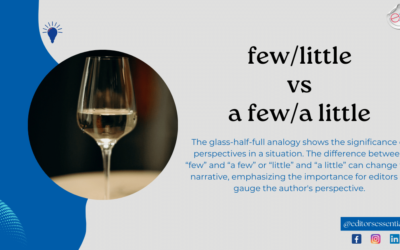Editing is interesting.
Sometimes the discussions around an edit become much more interesting.
And there is always a duel between editors who want to think language can be kept simple and editors who think otherwise.
Many a times, there is no result.
Recently there was a discussion on the phrase following the word “approach.” One of the editors was unsure about editing the phrase “approach to relieving pain.” She initially thought the verb following the infinitive marker should be in the base form, thus inclined to edit the phrase as “approach to relieve pain.” However, the conscious copy editor in her whispered in her ears to check with someone. So she did. After much deliberation, the phrase was left unedited. Rightly so.
There is a belief, perhaps seen more among the learners of English as a second language, that whenever a verb follows the word “to,” the latter is an infinitive marker. Not always the case, because “to” has other functions as a preposition and as an adverb (yes, as an adverb). While it is true that the “to” before a verb form is an infinitive marker, sometimes it functions as a preposition. When “to” functions as a preposition, what follows need not be a verb but a noun (or a gerund). The tricky part is that sometimes identifying the function of “to” is an intricate task.
Let’s focus on the phrase in hand – “approach to.”
The phrase “approach to” is shown in boldface as “approach to (sth)” in my Oxford Advanced Learner’s Dictionary (8th edition). A phrase in boldface here indicates that it is a standard phrase in English; “sth” is an abbreviation for “something,” which can be understood as “substitute here a noun or its equivalent.”
(There are two other usage points with the structure “approach to” as in “an approximation to something” or “denoting a road, sea passage, or other way leading to a place.” Even though in these cases a noun follows the structure, our discussion centers around the meaning “a way of dealing with a situation or problem.”)
Let’s consider three examples:
- We need a whole new approach to the job.
- The following gives an example of the WHO approach to treating chronic pain with medications.
- The researchers describe a new approach to promote regeneration of heart tissue.
The cake walk
The first example – “We need a whole new approach to the job” – meets all the criteria for being a perfect candidate for “approach to (sth)” syntax: a standard phrase with defined meaning,”to” as preposition, and “the job” as the object of the preposition. No problems for the editor here.
Walking down the catwalk
The second example – “The following gives an example of the WHO approach to treating chronic pain with medications” – is like walking down the catwalk. The author of this sentence clearly understands the structure and substituted the gerund form as the object of the preposition. All the copy editor needs to have is an eye for such constructions and be grateful to the author – and English language in general – by not editing the gerund form to its infinitive form. The situation, or problem, here is “treating chronic pain with medications,” not “treat chronic pain with medications.” So, the construction is “approach to treating chronic pain with medications.” Perfect. Dear copy editor, don’t fiddle with this sentence.
Walking on egg shells
The third example – “The researchers describe a new approach to promote regeneration of heart tissue” – is tricky. By the standard construction, it is tempting to edit the phrase “approach to promote” as “approach to promoting,” changing the verb to its gerund form, making it the object of the preposition. Another possibility is to see the phrase “to promote sth” denoting purpose, with “to” as the infinitive; perhaps unanswering the question “approach to what?” This can be checked by juxtaposing the phrase as
To promote regeneration of heart tissue, the researches describe a new approach.”
Such juxtaposition may not work with sentence like
The approach to relieve back pain is a combination of medications and physical exercise.
The sentence doesn’t look standard, so you edit as
The approach to relieving back pain is a combination of medications and physical exercise.
Now what?
Now that the copy editor knows about the confusion in deciding whether the phrase is the object of the preposition or an infinitive phrase, what should they do?
When what is written originally is a gerund, there should not be any problem. The author knew what they had written.
When what follows is an infinitive phrase, the copy editor can try and juxtapose the phrase as introductory and check if it still makes sense. If yes, leave it; otherwise, be wise.




what an idea sir gi!! Well explained.
Thank you for the clarification!
Happy to help 😀
Very nice explanation sir. Thank you!
Lessons learnt. Thank you, boss!